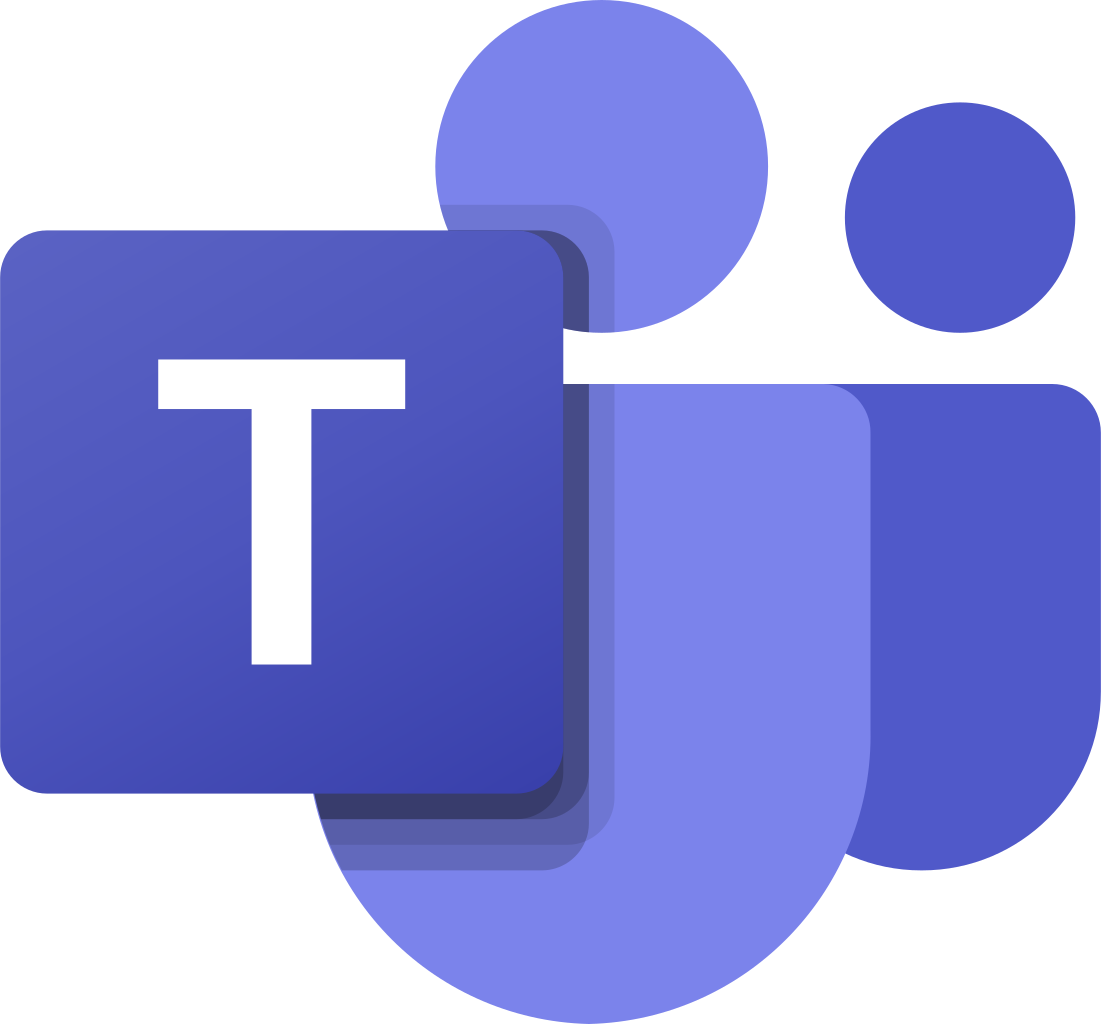Customer feedback – it's the key to understanding your audience, building stronger relationships, and ultimately, driving business success. But navigating the vast landscape of this feedback can feel like venturing into a data abyss, teeming with diverse formats and hidden insights.
Here's where the crucial distinction between structured and unstructured data comes into play. Think of it as the difference between neatly labeled files and a treasure chest overflowing with stories, opinions, sentiments, and emotions. Both hold valuable information, but understanding their unique characteristics is key to unlocking their full potential in analyzing customer feedback.
This article dives deep into the world of structured and unstructured data, their key differences, and how they can work together in synergy to create a holistic understanding of your customers.
TL;DR
- Structured data is highly organized, easy to search, and typically stored in relational databases, making it essential for quantitative analysis and trend identification in various business applications.
- Unstructured data, though challenging to organize due to its lack of a predefined model, is rich in qualitative insights and can provide a deeper understanding of customer sentiments and behaviors with the aid of NLP and text mining techniques.
- Integrating structured as well as unstructured data offers a comprehensive view of customer feedback, enhancing decision-making processes and customer relationship management through harmonization, insight extraction, and the translation of insights into actionable strategies.
- Zonka Feedback offers complete solutions to capture structured and unstructured data and analyze the same to get meaningful insights. You can sign up for a 14-day free trial or schedule a demo to know more.
Measure Customer Feedback & User Insights
With Powerful Feedback Surveys, capture structured and unstructured data to understand what users need and learn ways to delight them.

Understanding Structured Data
Structured data is a highly organized, machine-readable form of information typically found in databases. The simplicity of search, manipulation, and analysis makes structured data a fundamental component in numerous business applications.
Structured data, in the context of customer feedback, includes data points that can be categorized, segmented, and analyzed correct systematically. Imagine it as neatly labeled boxes where each box holds a specific type of data. This makes it ideal for large-scale analysis and identifying trends, but can miss the nuances and emotions expressed in free-form feedback.
Structured data is prevalent in customer feedback. Think of customer ratings, expressed as numerical scores, satisfaction levels, or attribute rankings. These quantitative measures are ideal examples of structured data.
Surveys also provide a wealth of structured data, including:
- Multiple-choice questions
- Rating scale questions
- Likert scale
- Star ratings
- CSAT Scores
- Net Promoter Score
- Binary ‘yes/no’ responses
- Drop-down menus
- Demographic data like age, gender, and location
This structured feedback makes it easy to organize and analyze survey results.
Advantages of Using Structured Data for Customer Feedback
In the realm of customer feedback, structured data shines with its organization and quantifiability, offering valuable insights but with specific strengths and limitations. Here's a breakdown of its advantages:
- Quantifiability: Structured data models provide numerical or categorical feedback metrics, such as ratings on a scale or responses to choice questions. These quantifiable data points allow for straightforward measurement and comparison of customer satisfaction levels, making it easier to identify trends and patterns.
- Ease of Analysis: The organized format of structured data simplifies the analysis process. With structured data, businesses can use statistical techniques, data visualization tools, and analytical models to derive actionable insights from customer feedback efficiently.
- Consistency and Standardization: Structured data ensures consistency and standardization in feedback collection and analysis. By using predefined survey questions and response options, businesses can gather uniform feedback across different customer interactions, products, or service channels.
- Efficient Reporting: Structured data lends itself well to reporting and dashboarding solutions. Businesses can generate comprehensive reports and dashboards summarizing key customer feedback metrics, trends, and insights, facilitating informed decision-making and performance monitoring.
- Integration with Systems: Structured data can be easily integrated with customer relationship management (CRM) systems, enterprise feedback management platforms, and analytical tools. This integration enables businesses to centralize customer feedback data, streamline data flows, and leverage advanced analytics capabilities.
- Automated Analysis: Structured data analysis can be automated using software tools and algorithms. Automated analysis techniques, such as sentiment analysis and text mining, allow businesses to process large volumes of structured feedback data efficiently, uncovering valuable insights at scale.
- Personalization and Segmentation: Structured data enables businesses to segment customers based on various attributes, such as demographics, purchase history, or feedback scores. By segmenting customers, businesses can tailor their marketing strategies, product offerings, and customer experiences to meet the specific needs and preferences of different customer groups.
- Actionable Insights: Structured data analysis facilitates the identification of actionable insights and improvement opportunities. By analyzing structured feedback data, businesses can pinpoint areas for enhancement, address customer pain points, and implement targeted initiatives to enhance overall customer satisfaction and loyalty.
- Regulatory Compliance: Structured data collection and analysis methods can help businesses maintain regulatory compliance, particularly in industries with stringent data privacy and security regulations. By adhering to structured data standards and best practices, businesses can ensure the confidentiality, integrity, and availability of customer feedback data while meeting regulatory requirements. Additionally, implementing robust DSAR (Data Subject Access Request) processes ensures transparency and compliance with data privacy regulations, allowing businesses to effectively manage and respond to requests from individuals regarding their data.
Understanding Unstructured Data
While structured data provides valuable metrics, understanding your customers requires venturing beyond neatly labeled boxes.
Unstructured data, the chaotic treasure trove of customer feedback, holds the "why" behind the numbers, unveiling emotions, motivations, and detailed experiences. Imagine it as a treasure chest filled with stories, waiting to be unlocked.
Unstructured data can be likened to the unpredictable member of the data family. It lacks a predefined data model and is not organized in a pre-defined manner, making it harder to label, organize, and search. It includes various types of information that do not fit neatly into traditional databases, often originating from unstructured data sources.
💡Despite its lack of inherent structure, unstructured data accounts for a staggering 80-90% of data volume. It is the raw, unfiltered voice of the customer, offering invaluable insights.
Unlike its structured counterpart, unstructured data lacks a predefined format. Unstructured data sources in customer feedback, particularly in surveys, encompass various channels where customers provide qualitative feedback in free-form or non-standardized formats.
There are many examples of unstructured data and they come in various forms, including:
- Open-Text Responses
- Comments and Suggestions Boxes
- Text Boxes and Feedback Fields
- Social Media Channels
- Email Responses
- Chatbot Interactions
- Customer Reviews
Advantages of Unstructured Data in Customer Feedback
Numbers provide clarity, but to truly understand your customers, you need to hear their voices. This is where unstructured data, the seemingly chaotic ocean of customer feedback beyond standardized responses, comes in. While it might require more effort to navigate, the insights it offers are worth the dive. Here's why embracing unstructured data in customer feedback is valuable:
- Richness and Depth: Structured data tells you "what" customers think, but unstructured data reveals the "why". Open-ended responses, comments, and reviews paint a vivid picture of customer motivations, frustrations, and desires, providing context and depth beyond numerical scores. Unstructured data captures the richness and depth of customer feedback by allowing customers to express their opinions, emotions, and experiences in their own words.
- Granularity: Unstructured data enables businesses to dive deeper into specific topics, issues, or themes that matter to customers. By analyzing open-text responses, comments, and suggestions, businesses can identify granular details, concerns, preferences, trends, and patterns in customer feedback that may be overlooked in structured surveys.
- Flexibility and Adaptability: Unstructured data offers flexibility and adaptability in capturing diverse forms of feedback across various channels and touchpoints. Customers can provide feedback through multiple channels such as social media, email, chat, or phone calls, allowing businesses to capture feedback in real-time and in the customer's preferred mode of communication.
- Real-Time Insights: Unstructured data sources such as social media, online reviews, and chat interactions provide real-time insights into customer sentiments, allowing businesses to monitor and respond to customer feedback promptly. Real-time feedback enables businesses to address issues, resolve complaints, and capitalize on positive experiences in a timely manner.
- Contextual Understanding: Unstructured data provides a contextual understanding of customer feedback by capturing the broader context, background information, and underlying reasons behind customers' opinions and behaviors. This contextual understanding helps businesses interpret feedback accurately and make informed decisions.
- Identifying Emerging Trends: Unstructured data analysis helps businesses identify emerging trends, emerging issues, or evolving customer preferences that may not be apparent in structured data analysis. By monitoring customer conversations and feedback across various channels, businesses can stay ahead of market trends and proactively respond to changing customer needs.
- Personalization and Customization: Unstructured data allows businesses to personalize customer interactions and tailor products, services, and experiences to meet individual customer preferences. By analyzing unstructured feedback, businesses can extract insights into customers' unique preferences, pain points, and expectations, enabling personalized marketing campaigns, product recommendations, and customer support.
- Competitive Advantage: Leveraging unstructured data effectively provides a competitive advantage by enabling businesses to differentiate themselves based on customer-centric strategies and insights. Businesses that can harness the power of unstructured feedback data to understand and meet customer needs are better positioned to drive customer satisfaction, loyalty, and advocacy.
Embracing unstructured data empowers you to move beyond surface-level metrics and truly connect with your customers on a deeper, emotional level. You need advanced technologies like natural language processing, artificial intelligence, and data analytics, machine learning, and more to gain insights.
Several tools perform sentiment analysis on large data lakes from customer feedback as well as social media data to gather actionable insights from unstructured feedback. This leads to data-driven decisions that resonate with their needs, foster loyalty, and drive business success.
Structured vs. Unstructured Data: Key Difference & Comparison
Now that we have discussed structured and unstructured data, their data sources, and their key advantages, it's time to get a quick comparison of the two. Here is a table depicting structured vs. unstructured data on different parameters.
| Features | Structured Data | Unstructured Data |
| Format | Predefined, standardized format (e.g., multiple-choice, rating scales) | Unstructured, variable format (e.g., text, images, audio files, video) |
| Analysis | Easily analyzed with tools designed for structured data | Requires specialized tools and techniques (e.g., sentiment analysis, NLP) |
| Insights | Quantitative, measurable insights (e.g., satisfaction scores, trends) | Qualitative, emotional insights (e.g., customer opinions, stories) |
| Depth | Limited scope, captures predefined information | Richer detail, reveals "why" behind responses |
| Scalability | Highly scalable, efficient for analyzing large datasets | Can be more challenging to analyze large volumes |
| Examples | Satisfaction ratings, NPS scores, feature ratings, survey responses with predefined options | Open-ended feedback, reviews, social media comments, email responses, call recordings |
| Advantages | Easy to collect, analyze, and compare | Deeper understanding of customer experience, identifies trends, personalization potential |
| Disadvantages | Limited scope, misses nuances, lacks emotion | Difficult and time-consuming to analyze, subjective interpretation |
Finding the Synergy Between Structured & Unstructured Data for Holistic Insights
Finding the synergy between structured and unstructured data is crucial for gaining holistic insights into customer feedback and experiences. While data from structured and unstructured feedback has its strengths, the true magic lies in their combined power. Integrating structured data's quantitative insights with unstructured data's qualitative richness paints a complete picture of the customer journey. However, the true heart of their emotions and motivations often lies hidden within the unstructured data, a seemingly chaotic sea of text, images, and audio files.
Imagine this:
- Structured data tells you "what": 75% of customers rated your product as "good" on a 5-point scale.
- Unstructured data reveals the "why": Open-ended responses mention a specific feature as lacking and frustrating, impacting their overall experience.
By bringing these together, you gain a deeper understanding. The "good" rating might mask underlying dissatisfaction with a specific aspect. You can prioritize addressing this feature to improve customer experience and potentially increase satisfaction scores.
Translating Insights into Action
Both structured as well as unstructured data offer a treasure trove of insights. However, it's how we turn these insights into action or how we actually make the most of both structured data as well as unstructured data that makes the difference.
Here's how businesses can leverage both types of data to achieve a comprehensive understanding:
#1. Integrating Data Sources
Combine structured data from surveys, ratings, and transaction records with unstructured data from open-text responses, social media comments, and reviews. Integrating data from multiple sources provides a more complete view of customer feedback and behavior.
#2. Use Surveys with a Mix of Open-ended & Closed-ended Questions
Deploy surveys with a mix of both open-ended questions and closed-ended questions to capture both unstructured as well as structured data. The survey tool should have the capability to include different survey questions for every survey type.
#3. Invest in the Right Tools
Specialized tools like sentiment analysis tools and text analytics tools can help manage and analyze unstructured data efficiently while you can get your CX metrics displayed by the survey software itself.
#4. Contextualizing Insights
Use unstructured data to provide context and nuance to structured data insights. For example, sentiment analysis of social media comments can help interpret trends observed in structured survey responses, providing deeper understanding of customer sentiments. Opinion mining or intent analysis of responses to open-ended questions can help identify what's the opinion and intent of the customers.
#5. Identifying Patterns and Trends
Analyze structured data to identify quantitative patterns and trends, such as common issues or preferences among customers. Then, use unstructured data to explore the underlying reasons behind these patterns and trends, uncovering qualitative insights and customer stories.
#6. Enhancing Personalization
Combine structured customer data (e.g., demographics, purchase history) with unstructured feedback (e.g., comments, reviews) to create personalized experiences easily on low code platforms. By understanding both the quantitative and qualitative aspects of customer interactions, businesses can tailor products, services, and marketing campaigns to meet individual needs effectively.
#7. Improving Predictive Analytics
Use structured data for predictive modeling and forecasting, such as predicting customer churn or future purchase behavior. Then, enrich these models with unstructured data, incorporating textual features or sentiment scores to improve predictive accuracy and capture nuances not captured by structured data alone.
#8. Optimizing Decision-Making
Integrate structured and unstructured data into business intelligence dashboards and analytics platforms to provide decision-makers with comprehensive insights. By presenting quantitative metrics alongside qualitative feedback, decision-makers can make more informed and contextually relevant decisions.
#9. Enabling Real-Time Monitoring
Utilize unstructured data sources like social media and customer support chats for real-time monitoring of customer sentiment and feedback. Structured data can then be used to aggregate and analyze trends over time, providing historical context and identifying long-term patterns.
#10. Driving Continuous Improvement
Combine structured data metrics (e.g., Net Promoter Score) with unstructured feedback analysis to prioritize improvement initiatives. By triangulating quantitative metrics with qualitative insights, businesses can focus resources on addressing the most impactful issues and opportunities identified through customer feedback.
#11. Ensuring Compliance and Ethical Use
Implement data governance and ethical guidelines to ensure responsible use of both structured and unstructured data. Protect customer privacy and confidentiality while maximizing the value of data insights for business objectives.
Conclusion
To wrap things up, the dichotomy between structured and unstructured data is not a divide; it’s a spectrum. Each type of data offers unique insights that, when harnessed effectively, can revolutionize business practices. From understanding the basics to integrating both forms of data, to successfully translating insights into action, we’ve taken you on a comprehensive journey of unstructured and structured data. Here’s to harnessing the power of data for business growth!
The key to making the most of both structured and unstructured data is to find the tool that helps you reach a synergy of both.
With Zonka Feedback, you have the capability to create surveys for any industry with both closed-ended as well as open-ended questions. You can simply use their rating questions, Likert scale questions, matrix questions, CSAT survey questions, NPS questions, or any other closed-ended question. As a follow-up, you can add a comment box, seek suggestions, or even let users describe any specific problem through their open-ended questions.
In addition to different CX metrics like CSAT, NPS, and CES, Zonk Feedback also offers text analysis, sentiment analysis, opinion mining, intent analysis, natural language programming, and more. This helps businesses adopt a multi-dimensional approach to customer feedback analysis.
You can sign up for a free 14-day trial or schedule a demo to get a walkthrough of the product and how you can use feedback surveys to leverage structured and unstructured data.
Frequently Asked Questions
1. What is the difference between structured and unstructured data?
Structured data is standardized, clearly defined, and stored in data warehouses, while unstructured data is usually stored in its native format and doesn't fit neatly into data tables due to its size or nature. Unstructured data can include audio, video files, and large text documents.
2. What is the difference between structured and unstructured data in finance?
In finance, structured data is organized and easily searchable, commonly used in financial reporting and inventory management, while unstructured data lacks a specific format and is more challenging to process, used in social media monitoring and customer sentiment analysis. The key difference lies in the organization and searchability of the data.
3. What is an example of structured and unstructured data?
Structured data includes information like dates, names, product IDs, and transaction details, while unstructured data encompasses text files, PDFs, social media posts, images, and emails. Both types play essential roles in data analysis.
4. How can we analyze unstructured data?
You can analyze unstructured data effectively by using techniques like natural language processing (NLP) and text mining. These methods can help you extract valuable insights from unstructured data.
6. Why is it important to integrate structured and unstructured data?
Integrating structured and unstructured data is important because it provides a comprehensive understanding of customer feedback, enhancing decision-making processes. This allows for more informed and effective decision-making.

 MS Teams
MS Teams












